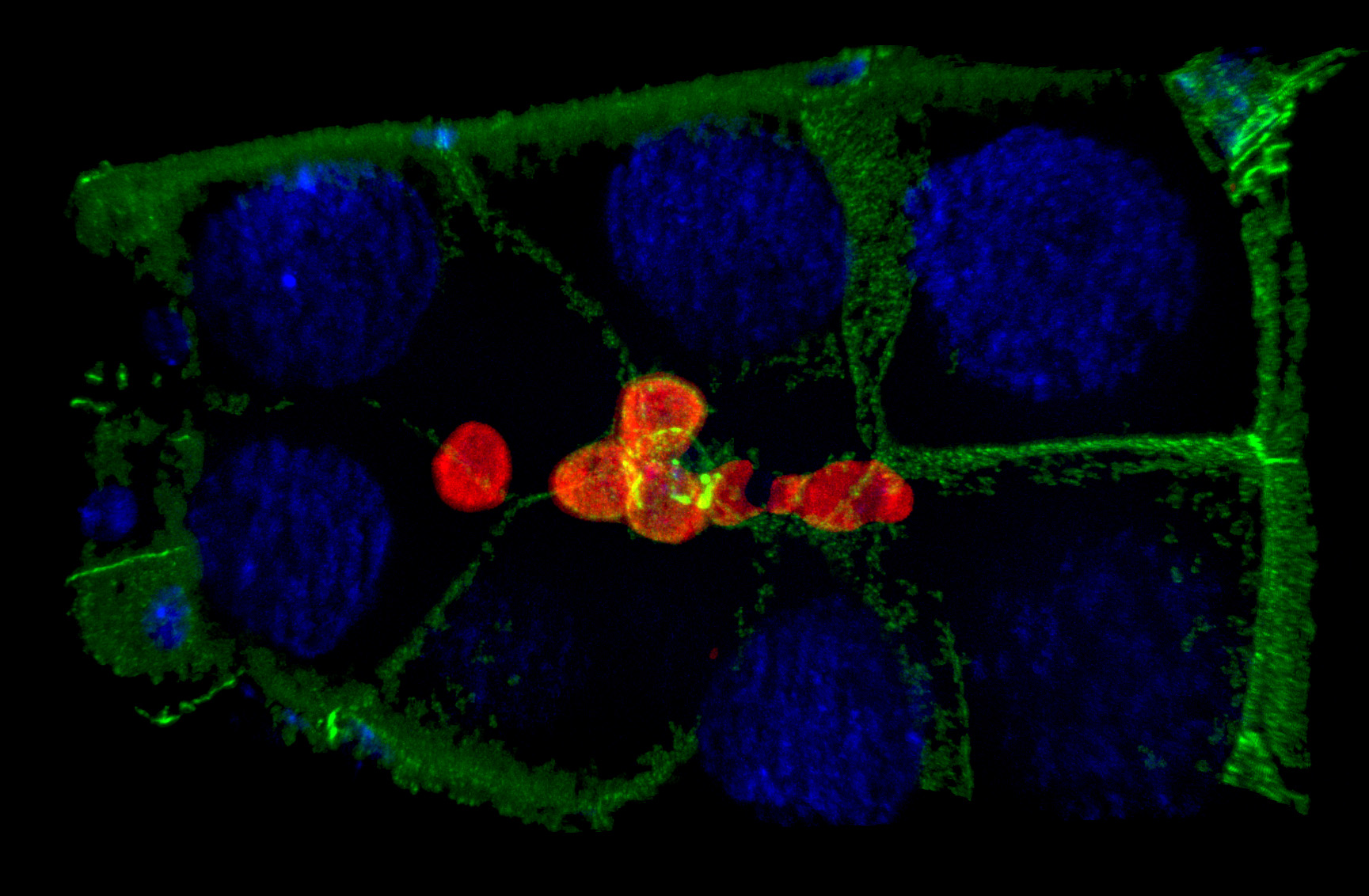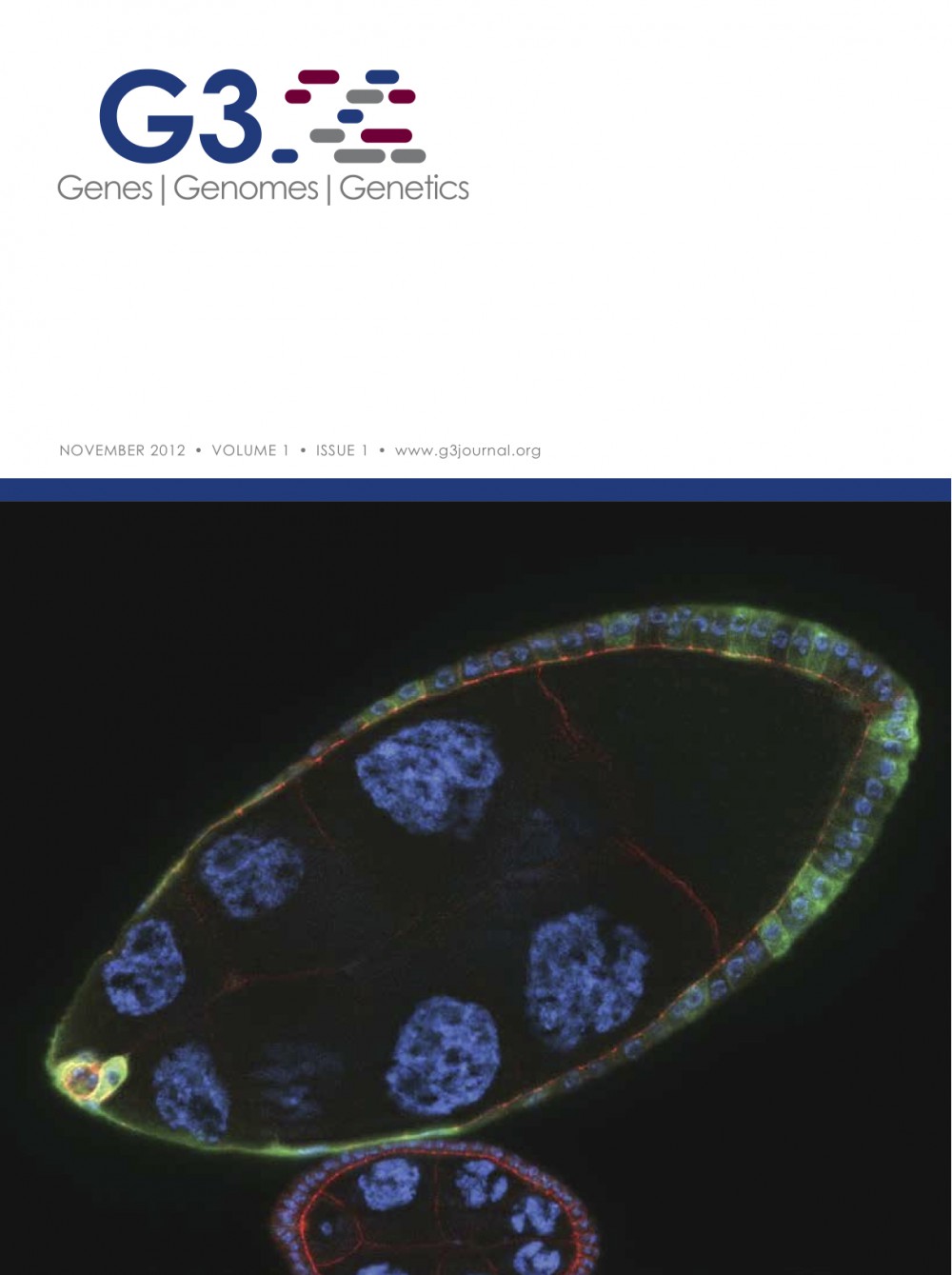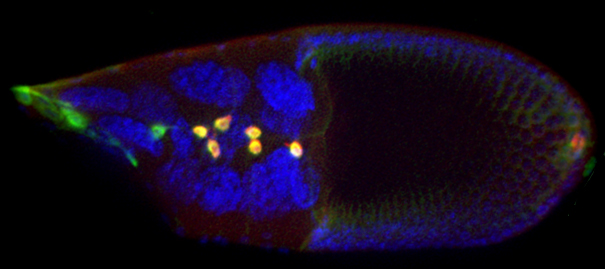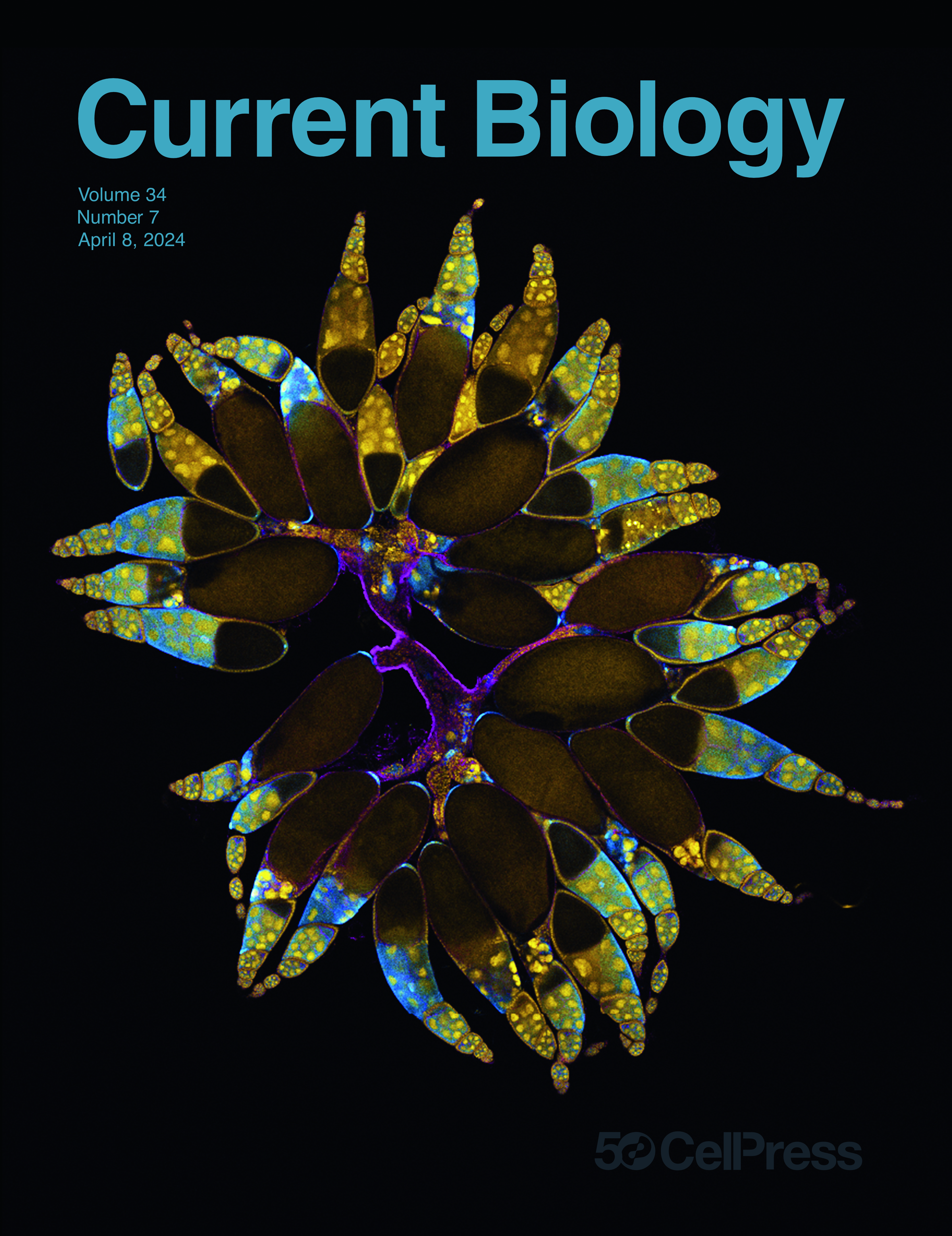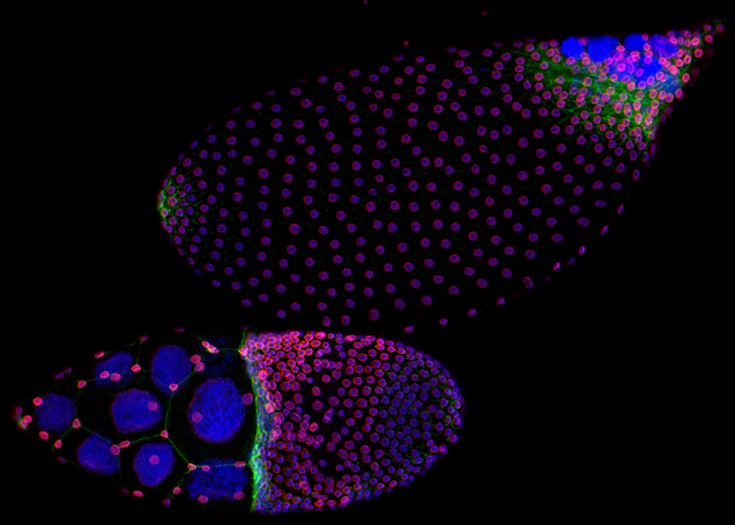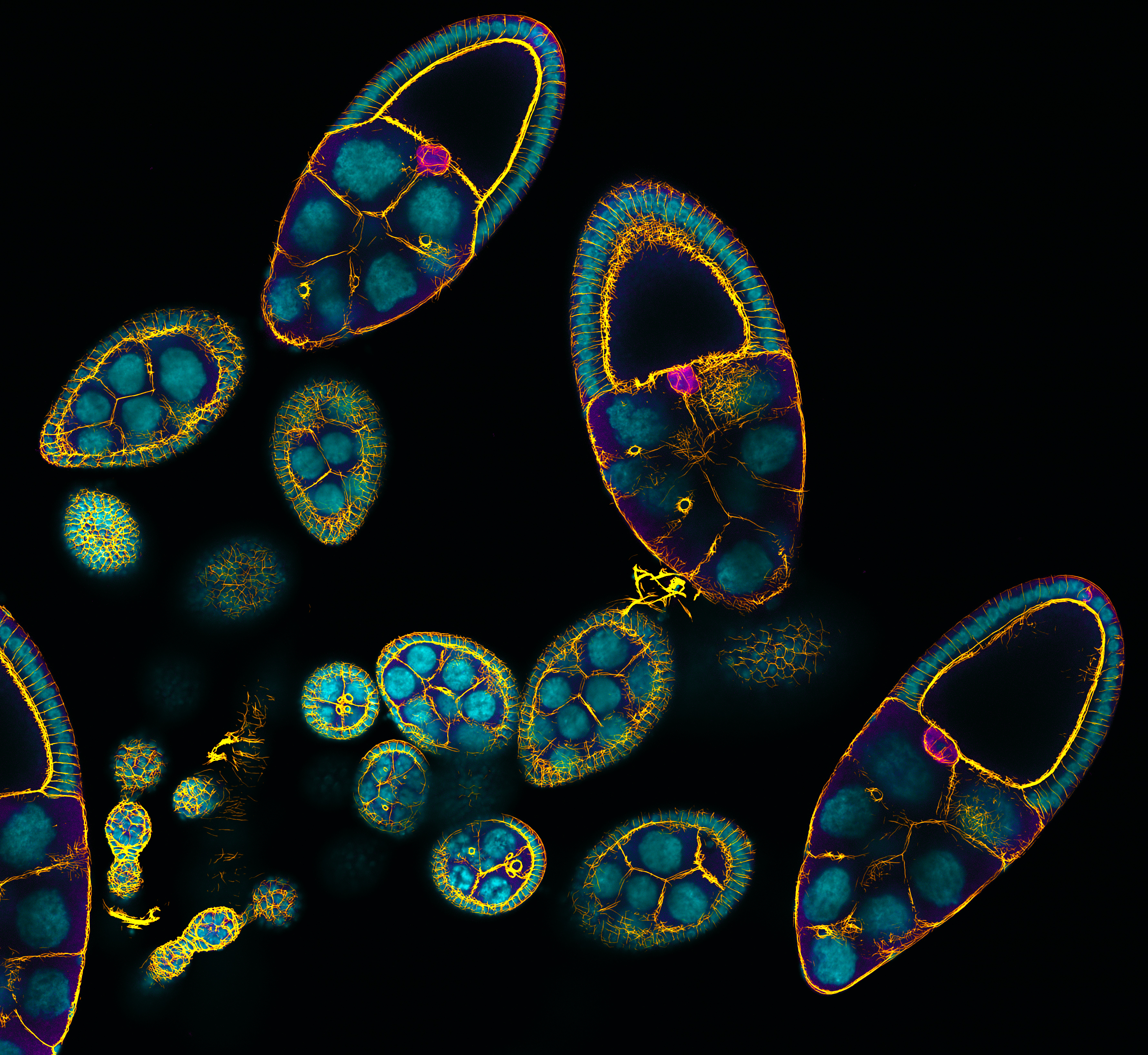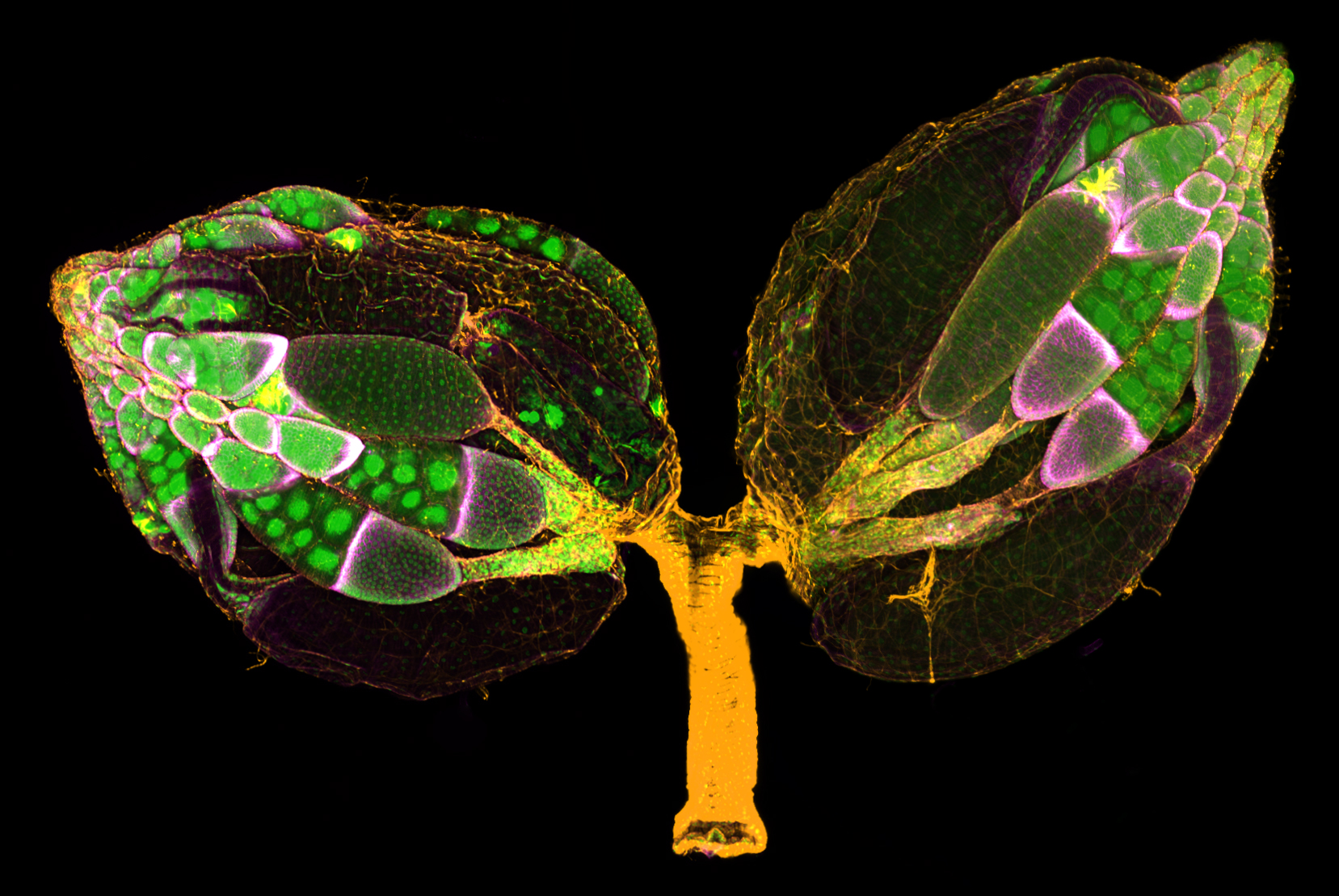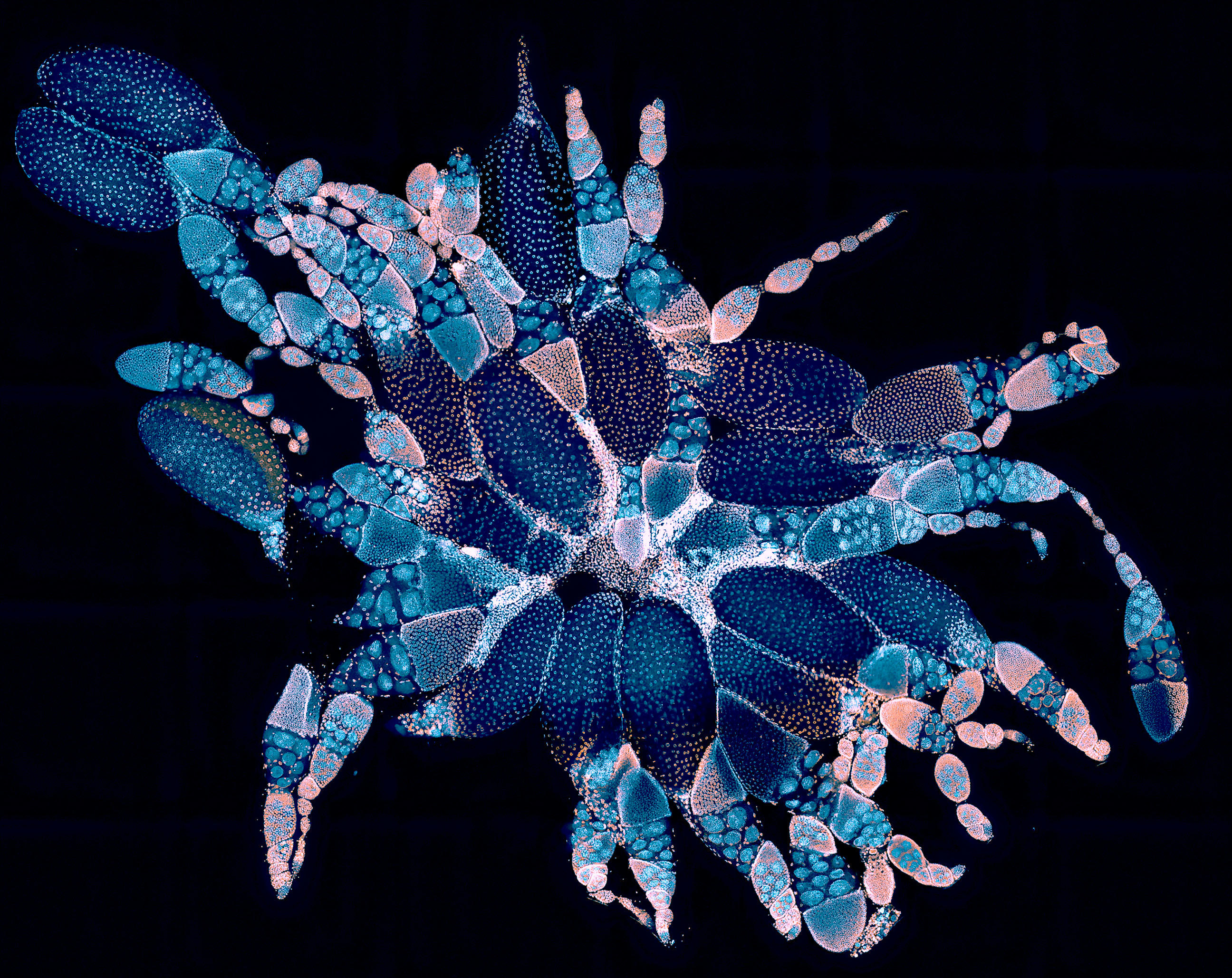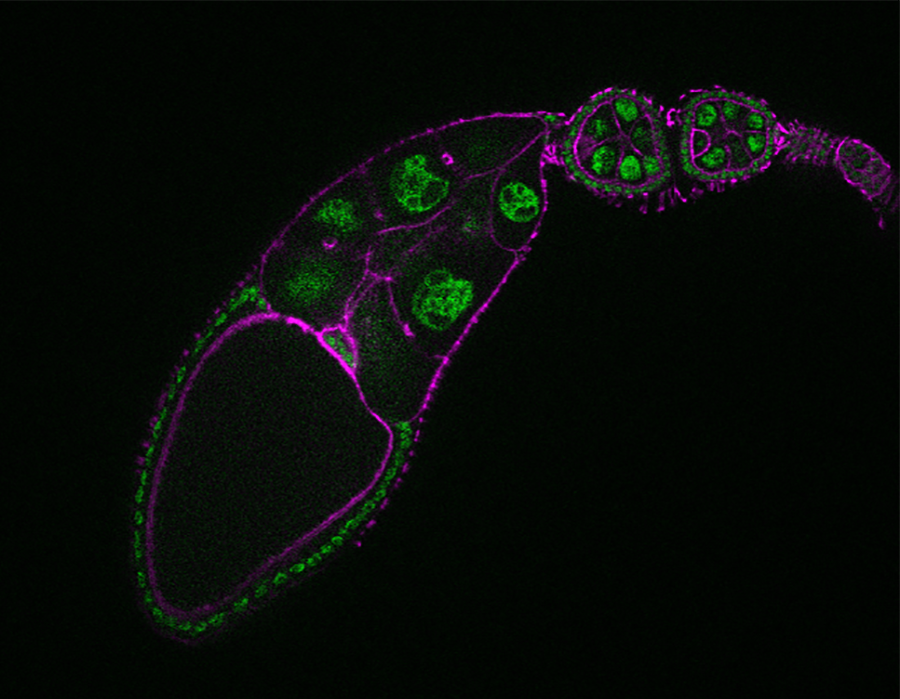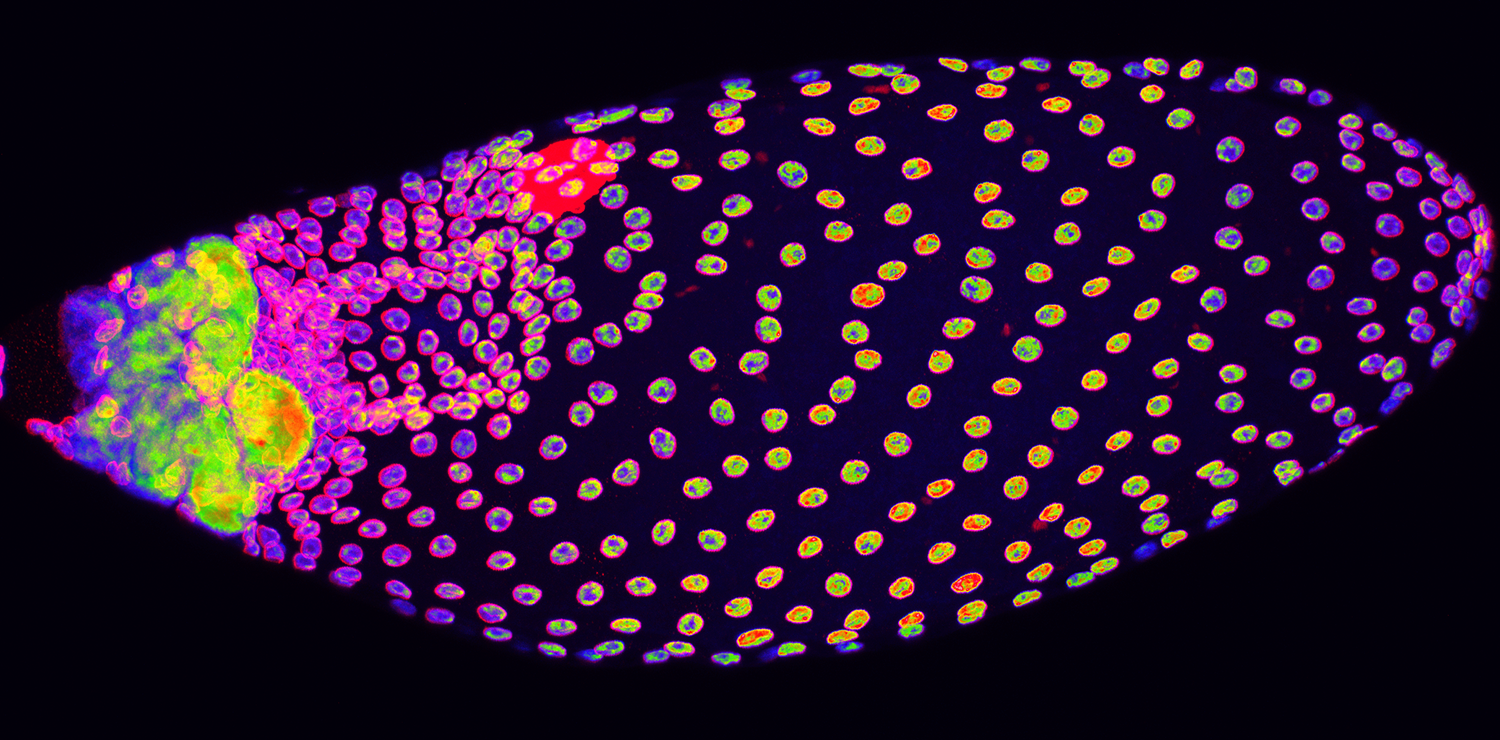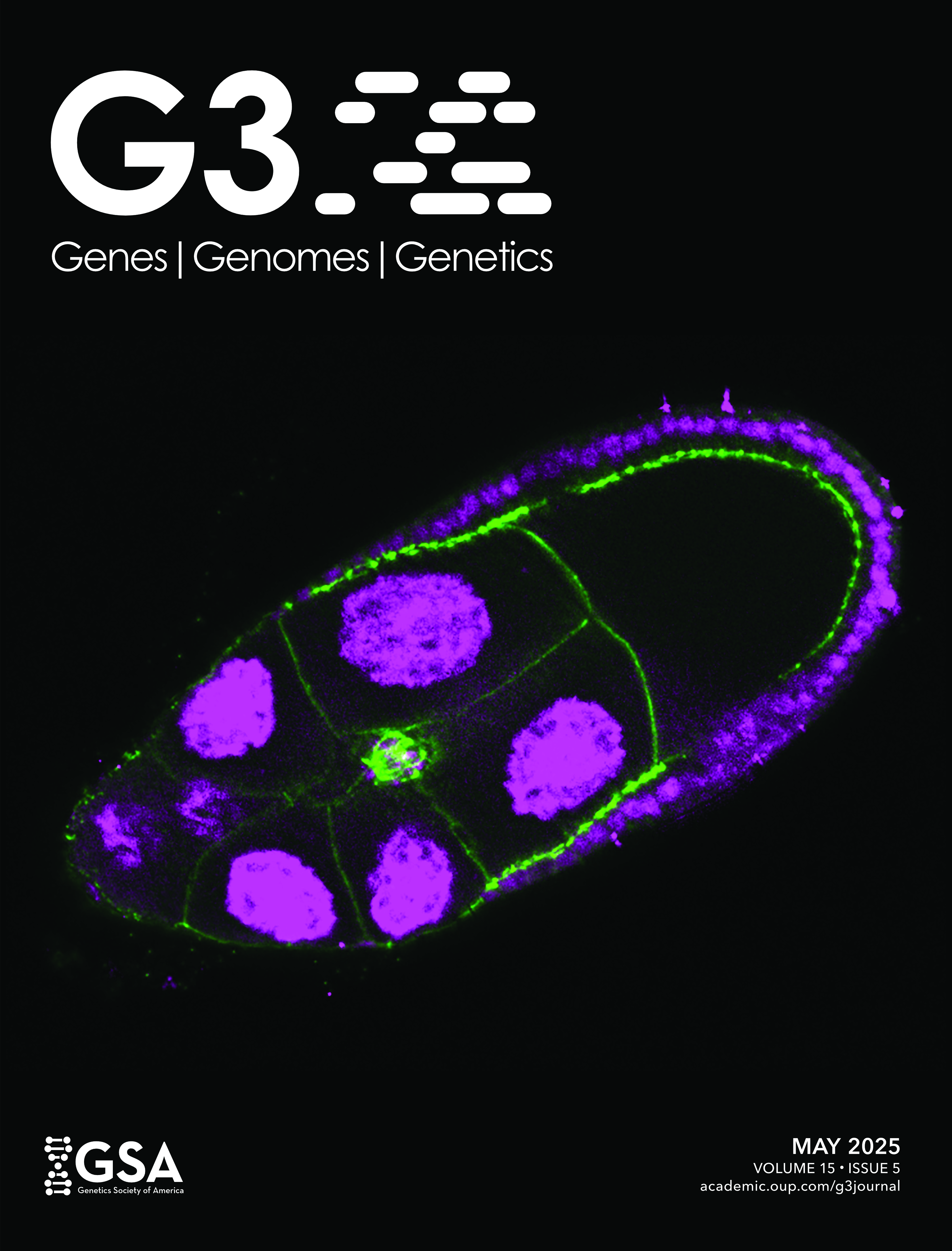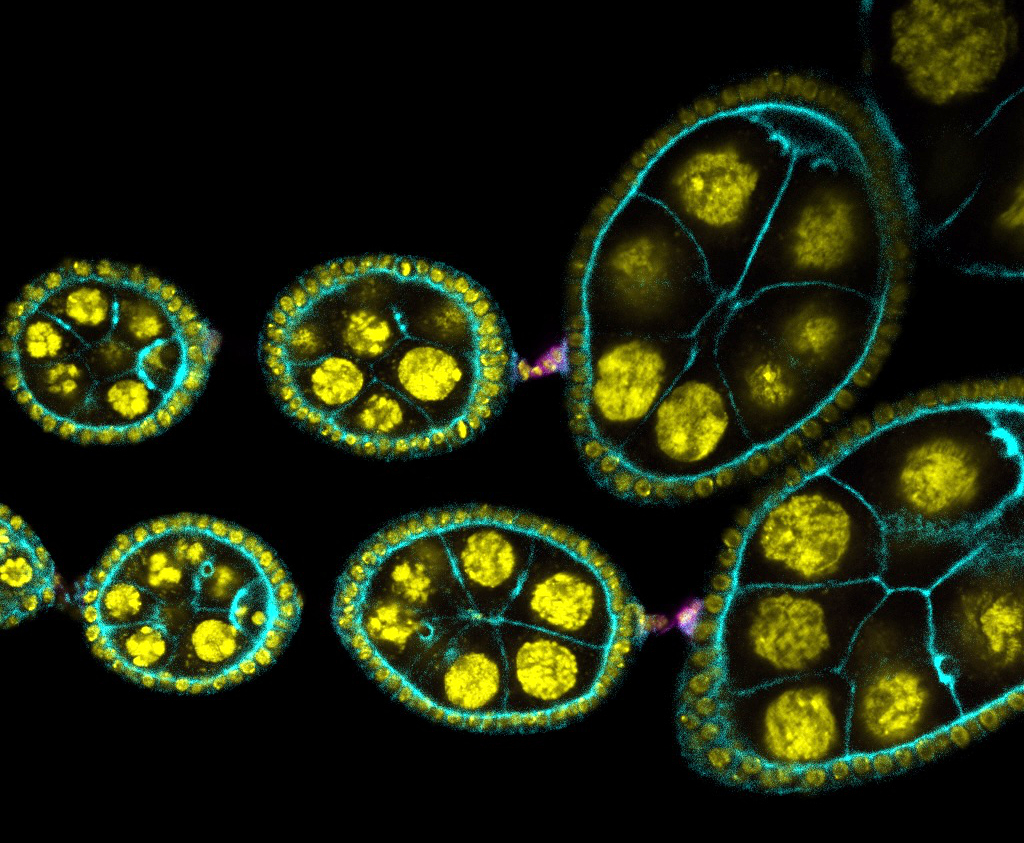Cell migration and tissue morphogenesis in development and disease
We use Drosophila border cells to study how groups of cells (“collectives”) move inside the three-dimensional environment of tissues. We are interested in how cells migrate during development, e.g. during organ formation and tissue remodeling, and in diseases like cancer, where it contributes to tumor invasion and metastasis. New research in the lab is asking how tissues and organs form and organize.
We use a combination of live cell imaging, genetics, and cell biological approaches to uncover how multicellular collective cell migration is controlled. We primarily use the fruit fly “border cell” model but also have investigated the role of collective cell movement in human cancer, like glioblastoma (collaboration with the lab of Justin Lathia at the Cleveland Clinic).
Some of our current interests:
- How do cell collectives keep their overall shape and ability to move within the confined environment of developing tissues?
- How do single cells come together as collectives and communicate to produce coordinated group movement? And how do cells in collectives stay together while migrating?
- How do cells break away from epithelia to become migratory?
- What are the molecular pathways that help migrating cell collectives keep moving?
- Application of Drosophila border cell model to tumor migration and invasion, especially glioblastoma

